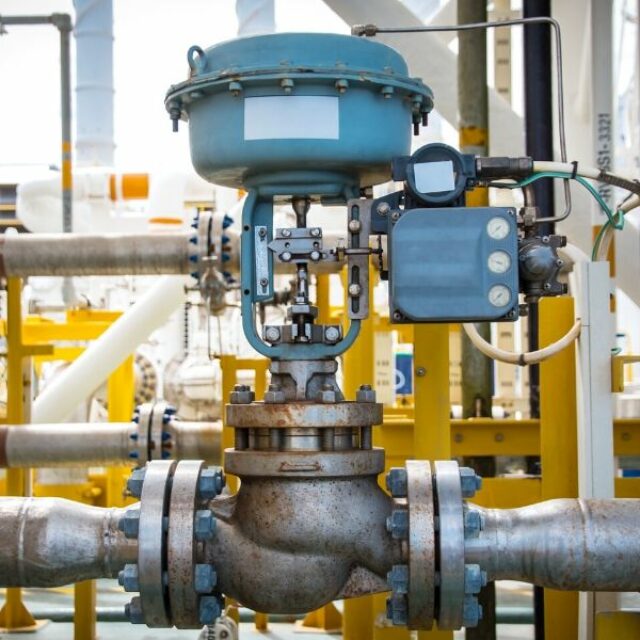Enhancing System Control with High-Performance Control Valves
Wiki Article
Achieve Seamless Combination and Control With Top Quality Building Automation Controls
In the world of contemporary structure monitoring, the importance of quality building automation controls can not be overstated. Welcoming high quality building automation controls is not merely an issue of convenience however a calculated important for organizations intending to maximize their facilities' efficiency and sustainability.
Evolution of Building Automation Controls
Throughout the past couple of years, the evolution of building automation controls has dramatically transformed the means buildings are taken care of and run. Developing automation systems primarily concentrated on fundamental functions such as managing air, air flow, and home heating conditioning (HVAC) systems. Nevertheless, as modern technology advanced, these controls have actually come to be more advanced, enabling for a broader variety of building systems to be incorporated and taken care of centrally.The advancement of constructing automation controls has actually seen a change in the direction of even more intelligent systems that can adjust to altering conditions in real-time. This versatility is critical for enhancing power effectiveness and making sure owner convenience. In addition, modern building automation controls now use features such as predictive maintenance, remote tracking, and data analytics, making it possible for facility supervisors to make data-driven decisions to improve building efficiency.

Advantages of High Quality Integration
The development in structure automation manages in the direction of more intelligent systems has highlighted the considerable advantages of high quality assimilation in enhancing structure procedures and improving general effectiveness. Quality integration of developing automation controls supplies several vital advantages. It leads to boosted energy effectiveness by permitting various systems to function together effortlessly, guaranteeing ideal efficiency and reducing power wastefulness. Second of all, quality assimilation boosts occupant convenience and productivity by making it possible for personalized control over ecological settings like temperature level, air, and lights quality. This modification can bring about an extra conducive and comfortable working or living atmosphere. In addition, quality combination simplifies upkeep and fixing procedures, as all systems are interconnected and can be checked and managed from a central user interface. This central control likewise gives far better visibility and insights right into building performance, making it possible for aggressive upkeep and optimization strategies. Overall, the benefits of high quality combination in building automation controls are undeniable, providing raised efficiency, comfort, and operational efficiency.Improved User Experience and Accessibility
Enhancing individual communication with building automation controls through intuitive style and improved availability elevates the overall experience for owners and center managers alike. By focusing on user experience, constructing automation systems can end up being much more straightforward and effective. Intuitive interfaces, clear navigating, and customizable settings empower users to interact with the controls quickly and effectively.Ease of access features play an essential function in ensuring that all people, consisting of those with disabilities, can use the building automation regulates easily. Integrating features such as voice commands, tactile switches, and color-contrasted displays can improve accessibility and make the controls more inclusive.
Additionally, enhanced customer experience leads to greater individual contentment, increased efficiency, and better decision-making. Residents can adjust environmental setups according to their choices, while facility managers can successfully keep track of and manage building systems - control valves. Generally, focusing on individual experience and access in structure automation manages adds to an extra efficient and find more info seamless building environment for all stakeholders entailed
Sustainable Practices Via Automation

Additionally, automation can promote the assimilation of eco-friendly power sources such as photovoltaic panels or wind generators into structure operations. By instantly readjusting energy use based on the accessibility of renewable resource, buildings can better decrease their dependence on non-renewable resources. This smooth combination of sustainable methods not only benefits the setting however additionally boosts the total operational performance and cost-effectiveness of the building. Through automation, buildings can line up with modern-day sustainability objectives and add to a greener future.
Future Trends in Building Control Equipment
One prominent pattern forming the future of building control systems is the raised assimilation of Artificial Intelligence (AI) and equipment learning. Furthermore, the Web of Points (IoT) is changing building control systems by linking sensors and devices to enhance and improve operations efficiency.
Another essential pattern is the focus on cybersecurity actions to secure versus possible risks to building automation systems. As structures become more interconnected, making sure durable cybersecurity procedures will be vital to safeguard delicate information and avoid unapproved gain access to.
Furthermore, the change in the direction of cloud-based systems is acquiring energy, enabling centralized control and remote accessibility to building systems. This facilitates simpler surveillance, upkeep, and updates, enhancing the general efficiency and adaptability of structure control systems. As see this here innovation proceeds to advancement, these patterns are expected to form the future landscape of structure automation controls, driving development and sustainability in the constructed setting.
Final Thought
Future patterns in building control systems are most likely to concentrate on further boosting automation capabilities for enhanced power performance and total performance. It is crucial for building proprietors and drivers to prioritize the adoption of top quality structure automation regulates to enhance building procedures and achieve long-term sustainability goals.In the realm of modern-day building administration, the significance of top quality structure automation controls can not be overstated. In general, the evolution of structure automation controls proceeds to drive advancement in the building administration industry, offering new opportunities for producing smarter and extra sustainable structures.
The development in structure automation regulates towards even more intelligent systems has actually highlighted the substantial advantages of quality integration in maximizing structure procedures and boosting general effectiveness. In general, prioritizing user experience and ease of access in structure automation regulates contributes to an extra effective and seamless building atmosphere for all stakeholders entailed.
It is vital for building owners and drivers to focus on the fostering of quality building automation manages to optimize structure procedures and attain long-lasting sustainability goals. - control valves
Report this wiki page